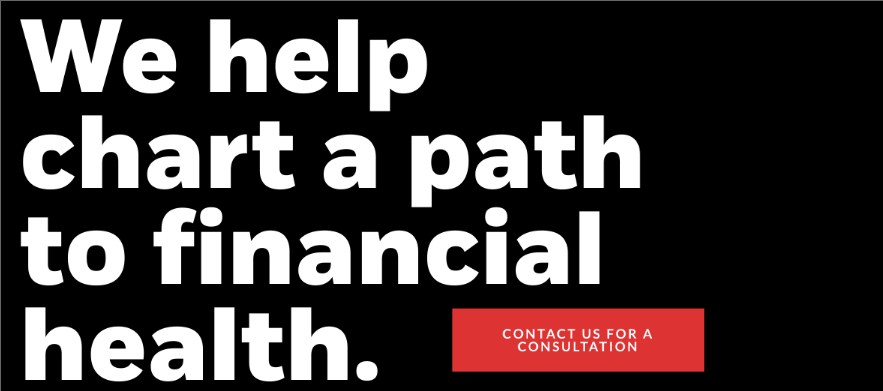How to Plan a Business Budget for a Startup
Launching a startup is an exciting adventure yet demands meticulous financial planning for sustainability. Some of things that come along include: researching your market, building your first product MVP or service, picking a good location if you’re not fully remote, securing funding, building an effective team, and creating a financial plan to ensure that you can cover your costs long enough for your business to become profitable.
Crafting and monitoring a budget is part of fiscal strategy. This article will cover essential budgeting practices for newly financed startups, including bolstering financial governance, guiding headcount growth, and managing investors. Though budgeting may seem tedious, a thoughtful plan can help to establish critical financial controls and discipline in a startup’s early days.
In startup budgets, every dollar counts. With limited resources, early-stage companies often embrace lean growth tactics to maximize the impact of gaining customers and gaining traction. This austerity leaves a scant margin for unclear fiscal plans or unexpected funding gaps. However, according to an article in Brex, they reported that one study revealed 61% of startup owners operate without an official budget. This lack of financial rigor threatens sustainability. Methodical budgeting is indispensable for startups to direct each dollar most effectively. A thoughtful budget steers resources toward targeted growth priorities from the outset.
What is a Startup Budget and Why is it Important? ?
A budget functions as a financial roadmap, answering critical questions like “How will two additional engineers impact my runway?” and “What digital ad spend meets revenue goals?” Thoughtful budgeting enables informed resource allocation, targeted growth tracking, and cash burn management. Furthermore, investors depend on your budget as a barometer of confidence in setting and achieving business objectives. Whether you are bootstrapping with your own savings, raising seed investment, or friends and family money, a startup budget is a simple breakdown of how you plan to use your capital and cover expected business costs. Whether you’re a pre-revenue or a later-stage tech company, a budget is an important financial planning tool.
With a well-crafted plan, startups make strategic spending tradeoffs and demonstrate fiscal discipline to stakeholders. Absent rigorous budgeting, financial uncertainty plagues operations and investor trust suffers. A budget can help you:
- Guide hiring, equipment purchases, and other investments based on projected needs.
- To finance to scale growth with real data, avoiding premature fundraising or excess borrowing.
- Better estimate break-even points and pivot variables as required.
- Forecast cash shortfalls, line up funds, or negotiate with vendors/lenders ahead of time.
- Recognize retained earnings upfront to strategize reinvestment.
- Identify excess cash to construct an emergency fund buffer.
- Produce accurate financial statements to share with investors and lenders.
Thoughtful budgeting empowers startups to make sound decisions, secure funding strategically, and demonstrate financial planning skills to stakeholders.
Budgeting in Pre-launch vs. Post-Launch
Before you launch your startup company, a budget is a useful tool for projecting startup costs through the initial months. At this point, build a realistic budget grounded in market research and informed estimates. Absent this financial roadmap, cash may prematurely evaporate or suffer misallocation. Methodical budgeting determines essential upfront funding, guides resource prioritization, and maximizes the runway in a startup’s critical infancy when every dollar is precious.
After you have launched your first product (post-launch), the budget transforms into an analytics tool revealing actual resource allocation and expenditure against projections. This quickly uncovers potential savings, growth opportunities, and blind spots.
For instance, the Brex article mentions that if paid advertising ranks as the largest expense, is each channel generating quality leads? Could extending vendor payment terms provide a cash buffer in slow periods? Does spending truly align with key performance indicators?
Ongoing analysis ensures budgets connect to strategic priorities and facilitates course-correcting, especially valuable for startups needing nimble financial controls.
Though budgeting may seem daunting, the process can be straightforward
Here is a simplified step-by-step guide to constructing a budget that forecasts startup costs, cash-flow, and supports lean operations from inception. These steps apply whether deploying accounting software, spreadsheets, financial models, or even using old-school paper and pen budgets. With some preparation, founders can demystify budgeting and implement sound fiscal practices integral to any promising startup. An achievable budget outlines projected expenses and revenues while instilling financial accountability from launch.
How do you plan a budget for a startup?
Early-stage budgeting relies on market research, competitor analysis, and vendor quotes to forecast figures, supplemented by existing R&D data. When projecting, take a conservative approach – better to underestimate revenue and overestimate costs.
With that prudent mindset, founders can define income and expenses, analyze results, and adjust the budget as needed. Though forecasting requires some initial guesswork, founders should ground projections in facts and adopt realistic assumptions.
This conservative budgeting prevents overconfidence and ensures adequate funding to execute the startup plan.
Start By Gathering Essential Information
To begin preparing your startup budget, you need to collect key components such as revenue sources and expense needs across all facets of the business. If you have an accounting system such as Quickbooks you will need to factor in historical financial data as well. Collecting accurate data and making realistic projections is crucial to ensure the budgeting process is based on practical information.
Include Relevant Team Members in the Planning Process
An article in Pilot Bookkeeping explains that co-founders and department heads should be involved and contribute insights regarding hiring needs, product timelines, and resource requirements. By involving the right people, you can ensure that your budget reflects the goals and objectives of the whole company.
Start By Setting Realistic Goals and Assumptions
You might be wondering whether you should use an Excel business expense template or a free online startup budget template both can get it done. Choose one with an intuitive layout and the timeline you need. Enter sample numbers into the spreadsheet to test the formulas. That way, you don’t input hours of data only to find out the spreadsheet doesn’t work. It’s normal for a new company to forecast figures based on market research, competitor analysis, and vendor quotes. You may already have some of these numbers from your research and development process.
Constructing a dependable budget hinges on realistic goals and assumptions, based on market trends, competitors, company size, and cash limits. Extensive market research and analysis of internal and external factors inform credible revenue and growth objectives to anchor the budget. Overly optimistic projections risk significant overspending, while overly conservative estimates limit a startup’s potential.
Finding the sweet spot requires founders to thoroughly research their market and set ambitious yet achievable targets given current constraints. With sound revenue and growth goals, startups create budgets that fuel growth without jeopardizing sustainability.
List Out the Essential Startup Costs
Startup costs are the expenses you incur and assets you buy before launching your company. These are the priority purchases — the resources you absolutely need to establish your business and start selling.
Capital Expenditures – These are one-time purchases of liquid and non-liquid assets like inventory, computers, furniture, vehicles, property, and security deposits. Keep in mind that startup assets, also called capital expenditures, aren’t tax deductible.
Fixed Operating Expenses: Identify and categorize your expected fixed expenses, including salaries, contractors, rent, travel, IT, software subscriptions, sales, and marketing expenses. Estimate these expenses by leveraging industry benchmarks, obtaining vendor quotes, and utilizing internal credit card and bank statements.
A new company could have monthly costs like:
- Rent or mortgage
- Payroll and benefits
- Business insurance
- Website hosting
- Internet and phone services
- Professional services
- Bank fees
Estimate your variable costs – Variable expenses increase or decrease in response to your sales and production, so they don’t typically have a set monthly cost. As you scale up, these costs generally go up, and vice versa.
Here are some examples of variable costs:
- Raw materials
- Advertising spend
- Utilities
- Equipment
- Shipping costs
- Business income taxes
- Transportation
- Travel and events
- Freelance services
When estimating expenses, round fixed and variable costs up to incorporate padding. For example, budget $18-$20 for a $17.26 subscription. Experts advise doubling or tripling projections for fluctuating categories like marketing, advertising, and legal. This conservative cushion absorbs unforeseen costs and overages without breaking the budget. While inflating every line item unnecessarily, building in modest buffers for volatile economic times gives startups breathing room. The flexibility prevents budget overruns and the need for emergency cuts when variable expenses inevitably waver.
Calculate Revenue Projections
Identify your startup’s revenue streams and relevant customer acquisition channels. Determine key metrics that drive revenue growth and model them first. This will help you plan for the resources needed to achieve your revenue goals. Understand the startup metric Cost Per Acquisition (CAC), which means what it costs to advertise and get a paying customer.
Next, you need to forecast your earnings for each type of income source. Without past sales data for your business, it’s best to create at least two sets of revenue projections: an optimistic projection and a conservative projection.
Leverage customer personas to forecast purchase frequency and revenue. Assess the total addressable market, attainable market share, and market conditions. Break-even analysis also informs monthly sales projections. Remain realistic about growth limitations like production capacity, staffing, or new customer acquisition costs. While ambitious targets push performance, unrealistic revenue assumptions misalign budgets and expectations. Factor in ramp-up time for new products or services. Thoroughly vet projections, as overestimated revenue risks significant cash flow gaps if not realized. Ground projections in data-driven market insights for accurate budgeting.
Add up your total costs, then review and adjust
After adding monthly cost estimates, calculate the total startup funding required. Hopefully, padding for overages and emergency reserves as well.
Early deficit spending is common but significantly exceeding projections signals a need for adjustments before seeking more capital.
Re-examine expenses and classify each as essential or discretionary. Eliminate, reduce, or defer discretionary costs first. Analyze key metrics such as customer acquisition costs, lifetime value, and retention to ensure your unit economics support future profitability.
Could you forego paid project management tools initially or use free versions? Is an in-house social media manager truly vital at launch? Could you start in a coworking space with used office equipment?
Ruthlessly trimming non-essentials stretches the runway. If the deficit still looks daunting, revisit assumptions and research ways to creatively tackle expenses.
Cashflow Management
Cash flow management is crucial for startup budgeting. Develop strategies to effectively forecast and manage your cash flow, including monitoring receivables, payables and maintaining financial reserves. By maintaining a healthy cash flow, you ensure the sustainable growth of your business.
Conclusion
For new early-stage startups, a well-crafted budget serves as a critical safeguard. As an adaptable roadmap, it empowers agility when conditions shift and highlights impending cash shortfalls. In dedicating time to thoughtful budgeting and financial modeling, founders gain an advantage over two-thirds of competitors lacking structured plans. Diligence in transforming projections into actionable budgets not only attracts investors but also steers startups smoothly from precarious launch to secure scalability. If you need any help, feel free to reach out and request a free consultation. Huckabee CPA’s outsourced CFO consulting services can help give guidance on the budgeting process from assumption to output, making sure all factors are considered and that your budget is both rational and investor-ready.












